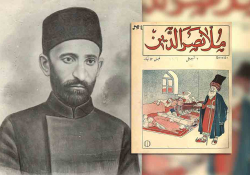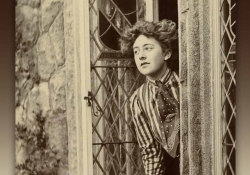The Great Pongoni

for Patricio Pron
I don’t know when, exactly, I began to equate literary translation with the institution of marriage. But at some point I started to think that the experience of creating a short story or novel or poem in one language—when there exists what is known as an “original” in another—was not dissimilar to the condition of being married. I did not think, however, that the work of translation was a marriage between the mind of the author of the original text and the mind of the translator authoring the translated text, for that would be intolerable for both parties. Rather, I thought it was between the original author’s body of work and the mind in the body of the translator.
I have never been married, not to another human being, anyway. But, in translating, in working and re-working the material of language to perfect it, you come to know the words you’ve created out of the authors’ words in a way different from the way you knew them at first blush. At first blush, you may feel you know the texts and can call them your own and they are novel and you love them. Later, you love them still, but differently. You come to see certain devices the author uses, sometimes repeatedly, and others that give you difficulty, which can be at times annoying. These are lexical equivalent of the socks your partner always leaves next to the bed in the morning, which you become accustomed to picking up; and you neither resent nor enjoy this action, it simply becomes a part of your routine; or perhaps it is better to say that you resent this routine on certain days, and on others, you find it charming. This is also known as intimacy.
The other thing that happens is that you spend so much time with the original author’s text you start to feel as though it belongs to you, even if you know it doesn’t, or only does in the sense that its presence creates another entity. That other entity is the translated text, but you would be mistaken if you were to think that the entity in this metaphor is a baby (and also relieved). It is not a baby, but a limb: the limb of the author grafted onto the translator’s body. Certain translators, after a lifetime of such work, may come, in this metaphor, to look not unlike the Hindu goddess Durga, in spite of the grafted arms’ invisibility (the arms fan out and reach down to the page whenever the translator is writing, and are visible only to those who possess the special decoder ring—namely, other translators).
Except that this metaphor isn’t quite right, is it (although you knew that already): for translation is actually like the stray dog rescued by A., whom we sometimes call the Great Pongoni. A. got her dog a few months ago from an animal shelter in Fort Smith. The dog had been abandoned and would have been put down if he hadn’t found a home, or rather, had his home not found him. The dog was wheezy and skinny and had sores on his joints from lying down in a confined space, and A. brought him home and fed him and took him for walks, and now Pongo is happy and resembles his owner: unflappable, but with a ferocity contained within that can be called on, if needed. He has a red collar and superheroic bearings, whether running swiftly through a softball field and or biting unknown people. Poor A. took him to the lake one day, and he bit someone and had to be quarantined. I don’t think any of us knew such things were in him; as I said before, he is such a calm dog: happy to nap in the back of A.’s Volvo while she does the laundry.
You know how they say pets come to resemble their owners? Or that owners come to resemble their pets? Well, the same is true for translated texts. For a text waiting to be translated is like a dog in a pound looking for a home. A translator finds a text she likes, maybe it’s a text that already appeals to her for certain reasons, she imagines the text to have a sensibility similar to her own, or the text runs up and licks her face eagerly, and she is moved or falls in love with it—but the text isn’t her text, it’s a text abandoned by the original author who was done with it, and there the shaggy thing sits, waiting for another owner, another home. The translator sees the dog and sifts through the necessary paperwork and permissions and puts him in her car and takes him home. And the dog is no longer the dog of the original owner, and its past can only be known through its present existence in the translator’s home, because even if there are traces of the original owner’s ideas about the animal left on the creature, as indelible as its spots, the translator can never know precisely what ideas the original owner had that led the dog to be as it was, since she was not around for the initial stages of its husbandry. In the end, the dog can only tell her about the dog, or about her ideas about the dog and how she wants to raise and care for him, because the longer she has him the more she will come to see him not as a dog that once belonged to a different owner, who kept the dog in a different home and fed him different things and went for walks in different places, where people said different things (where the dog had a different name, even)—because it will be hers, it will be hers to own, even if her ownership is a tenuous one.
And she will take him for walks where people will approach her and say, Can I pet your dog? and What’s his name? and What a sweet dog! and they will have their own ideas about the dog, “her” dog, based on whether or not they have a dog of their own; or maybe they don’t have a dog now but had one as a child, or they’ve never had a dog, or were bitten by a dog that looked like the one they see now and are wary; and as they approach the dog their stomach will quietly play a part in their impression of the animal’s bearing, for what they’ve had for breakfast that morning and whether they feel happy or tired or hungry will have an effect on the dog’s receptivity to their approaching; and as they get closer, they might think the dog is a dalmatian, because they think they know what dalmatians look like, and when A. tells them no, he’s a pointer, they will still think dalmatian, because they don’t know what pointers look like, and they will think to themselves, secretly or vocally, that the woman is wrong, and doesn’t know what she’s talking about, because they have their own ideas about the dog, which is all that matters to them, since their ideas about the dog are their only experience of the dog to begin and end with; so they approach the dog—happy—or nervous—or indifferent but curious—for we are instinctively curious about dogs in a way that we are not about people or translation—so there, there goes my metaphor for you, which is fair and fine enough, for we don’t need to know or care about a dog’s owner to enjoy petting or playing with a dog, to enjoy watching it run or fetch or wag is tail, and dogs are meant to be shared, for they make most, if not all, people happy, and the dog is going to do what it wants to do independent of our ideas about him anyway, which is as it should be, so that even if A. doesn’t think the Great Pongoni is a biter, and takes him off-leash for a run around Lake Wilson to make him happy, the Great Pongoni, with his great volition and great spirit and great ideas, well, one day he may run off and bite somebody, just because he can.
Fayetteville, Arkansas
Editorial Note: For more, read Heil's translation of Patricio Pon’s story “Visiting the Master” on the WLT blog.














